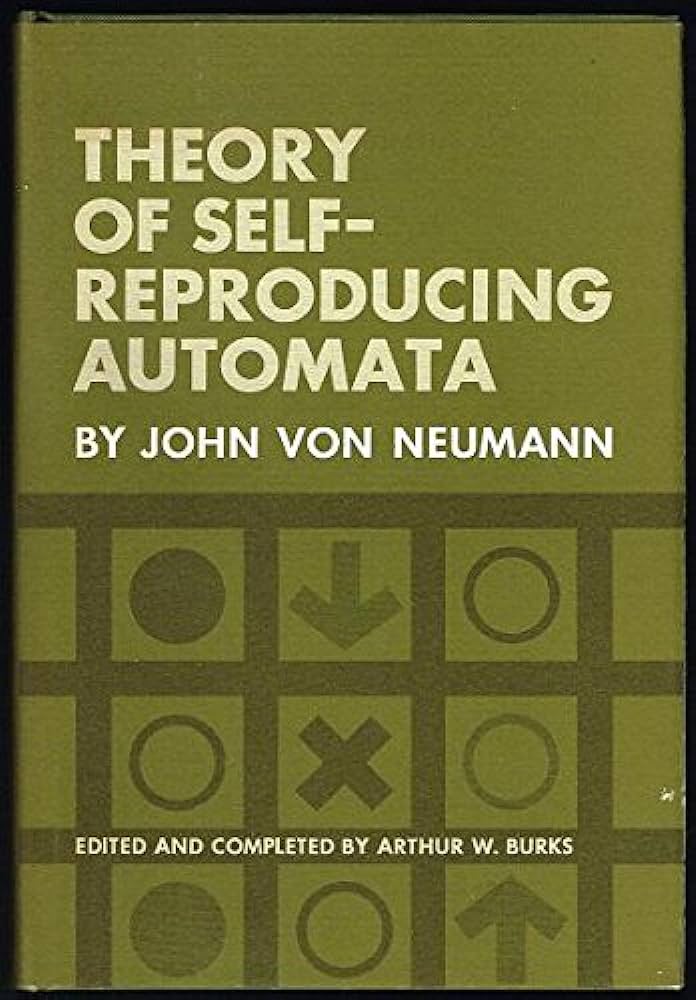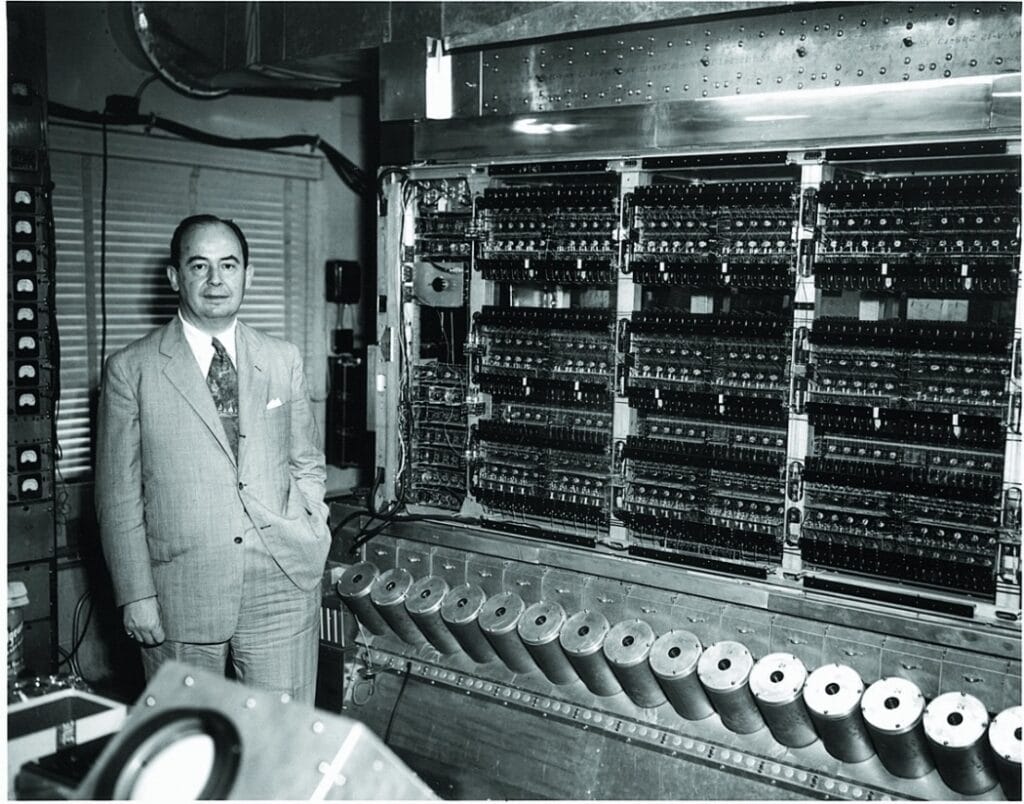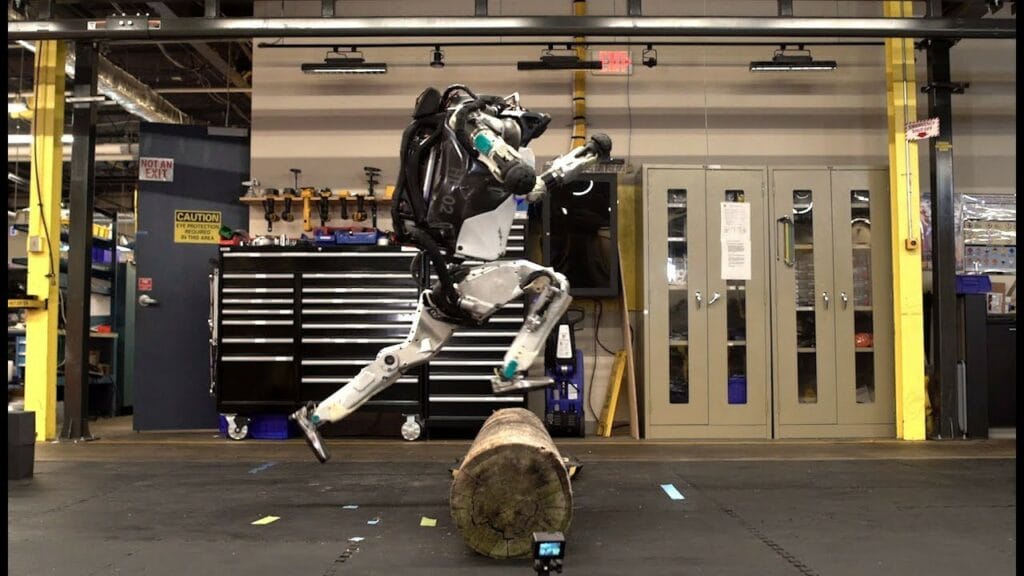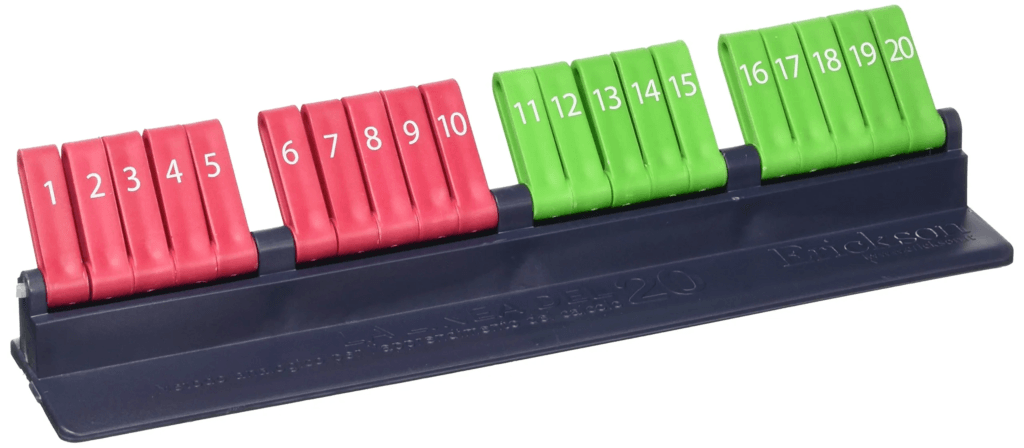A commonplace is to associate artificial intelligence with automata, with what are commonly referred to as robots. In this article, some thoughts on this issue will be expressed.
Robot
The term robot is of uncertain origin. The most widely accepted theory is that the word has a Czech origin from robota, which was the nickname given to the automatons tasked with performing forced labour in K. Čapek’s 1940 play. In the common imagination, the robot is different from the automaton: the automaton is perceived as something mechanical while the robot is perceived as electronic. In reality, robot and automaton1 are essentially the same thing. Thus the automaton is a machine capable of acting autonomously, a self-propelled apparatus on the basis of thought or, in its most basic form, on the basis of instructions. Even Mary Shelley’s Frankenstein can be counted as an automaton, in that it is self-propelled, powered by a human brain, albeit with elementary capabilities.
Auto-Reproductive

In 1966, the University of Illinois Press published an interesting volume entitled‘Theory of Self-Reproducing Automata‘ by John von Neumann. Edited and completed by Arthur W. Burks. The text, which was completed by Burks, referred to von Neumann’s studies in the 1940s. Von Neumann was a computer scientist and mathematician of the time who, in an attempt to tackle the subject of artificial life, studied natural processes and tried to create an artificial version of them. The discovery was sensational: there is a perfect possibility of adapting natural life to the artificial domain in every way. Keep in mind that von Neumann’s studies influenced the likes of A. Turing. According to Von Neuman’s writing, a Self-Reproducing Automata is not only possible but also conceivable by organising it into ten main organs: eight are compulsory and two are optional.
- The muscle, which is the organ responsible for moving the machine in space and manipulating the cells in the environment.
- The arm, which is the organ that allows the machine to build a copy of itself from cells in the environment, following the instructions contained in the memory.
- Memory, which is the organ that contains the information necessary for the construction and operation of the machine, encoded in a binary sequence.
- The sensor, which is the organ that allows the machine to perceive the state of the cells in its environment and to communicate with other machines.
- The controller, which is the organ that coordinates the actions of the machine based on the information received from the sensor and memory.
- The support, which is the organ that connects the other organs to each other and supplies them with energy.
- The copier, which is the organ that allows the machine to duplicate its own memory and transfer it to the daughter machine during reproduction.
- The decoder, which is the organ that allows the machine to interpret the information contained in the memory and translate it into commands for the other organs.
- The repairer (optional), which is the organ that allows the machine to detect and correct any errors in its own memory or that of the daughter machine.
- The mutator (optional), which is the organ that allows the machine to introduce random variations into its own memory or that of the daughter machine, in order to generate new characteristics and adapt to the environment.
Von Neumann’s theory not only takes up studies in biology that are still valid today, but also places the automaton at a high level of complexity in both thought and matter. It should be borne in mind that von Neumann, between 1950 and 1960, approached studies in neurology that in the last 50 years have converged into a branch called neuroscience.

Automata and Artificial Intelligence
Artificial intelligence thus seems the natural complement for an automatic body, i.e. one that is self-propelled and not limited to performing elementary actions that we might call ‘factory’ or ‘assembly-line’. Boston Dynamics’ robots are only precursors of this state: despite the fluidity and complexity of their movements that can be observed in the videos, their actions are still rather elementary compared to theoretical models of artificial intelligence.

However, this ‘basicity’ should not be understood as ‘technological inadequacy’ but as motor refinement; Boston Dynamics2 is concentrating on building automata with complex movements, capable of handling difficult situations such as loss of balance, static obstacles, dynamic obstacles, uneven terrain, slippery ground, changing loads and shifting weights. Powering such bodies with more complex intelligences will come later but even now, trying to compare such bodies with the organs envisaged by von Neumann, one is struck by the consistency that the mathematician used in his theories.
Brain, computer, digital intelligence
The equivalent of the human brain for an automaton is, without doubt, an artificial brain. It must undoubtedly be understood as a set of electronic circuits and components designed to contain artificial calculations and what we are usually inclined to call artificial intelligence. Of course: by artificial intelligence we do not mean elementary tasks, those are instructions and however refined they appear, they cannot be anything else. By artificial intelligence we mean the highest evolution of the discipline, the one from which we are still quite far away.
However, it is interesting to note one aspect: it is not wrong to call the human brain a digital calculating organ; this creates a similarity with an artificial brain (or a computer). We must therefore understand what is meant by digital computation and, above all, how it differs from the opposite, i.e. analogue computation. Summarily, we can say that the difference is in the way the numerical units used by the calculation system (by the computing machine) are represented.
In digital calculation, each number is represented exactly as in conventional writing or printing, i.e. as a sequence of decimal digits. Each decimal digit, in turn, is represented by a system of ‘symbols’ or ‘markers’.
In analogue calculation, numbers are represented by an appropriate physical quantity, the value of which, measured in some predetermined unit, is equal to the number in question.
Source: ‘Computers and the Brain’, J. von Neumann, Il Saggiatore, 2021
The easiest way to understand this difference is to realise that calculation with an analogue methodology (used in primary school) is based on the ability to create associations/analogies on the basis of available resources. I can move 10 matches to perform some basic operations by associating the mathematical function with the given unit (1 match = 1). Children, for example, tend to associate metaphorically speaking, operations with actions/colours/images and this has led to the development of the ‘line of 20’ that serves to perform any analogical calculation actions.

Digital calculation, on the other hand, aims to give me all the methodological tools I need to perform very complex calculations that are also more difficult to approach. It is therefore correct to say that the brain is a digital calculating organ, just like a computer. The essential difference is in the matter of which it is composed: in the first case organic matter with bio-electric functioning, in the second case non-organic matter with electric functioning.
Conclusions
It is therefore not strange to associate artificial intelligence with an automaton: it is the natural evolution of the automaton itself, which, from being unthinking or poorly thinking, evolves with a superior intelligence, albeit of an artificial nature.
Notes
- The etymology of automaton, according to Zanichelli, goes back to late Latin automatu(m) and from the Greek automatos meaning‘who thinks for himself‘. The component of thought, according to the Greek-Italian dictionary Rocci (p.308, Ed.1963) derives from máomai (μάομαι) which in turn derives from the Sanskrit matáh. The etymological root according to Rocci is máomai, which in languages derived from Sanskrit identifies the motions of thought [in Latin mens, memini (to think, to reflect)]. ↩︎
- As is logical to assume, Boston Dynamics started developing its solutions for the US military with financial support from DARPA (Defense Advanced Research Projects Agency). ↩︎

